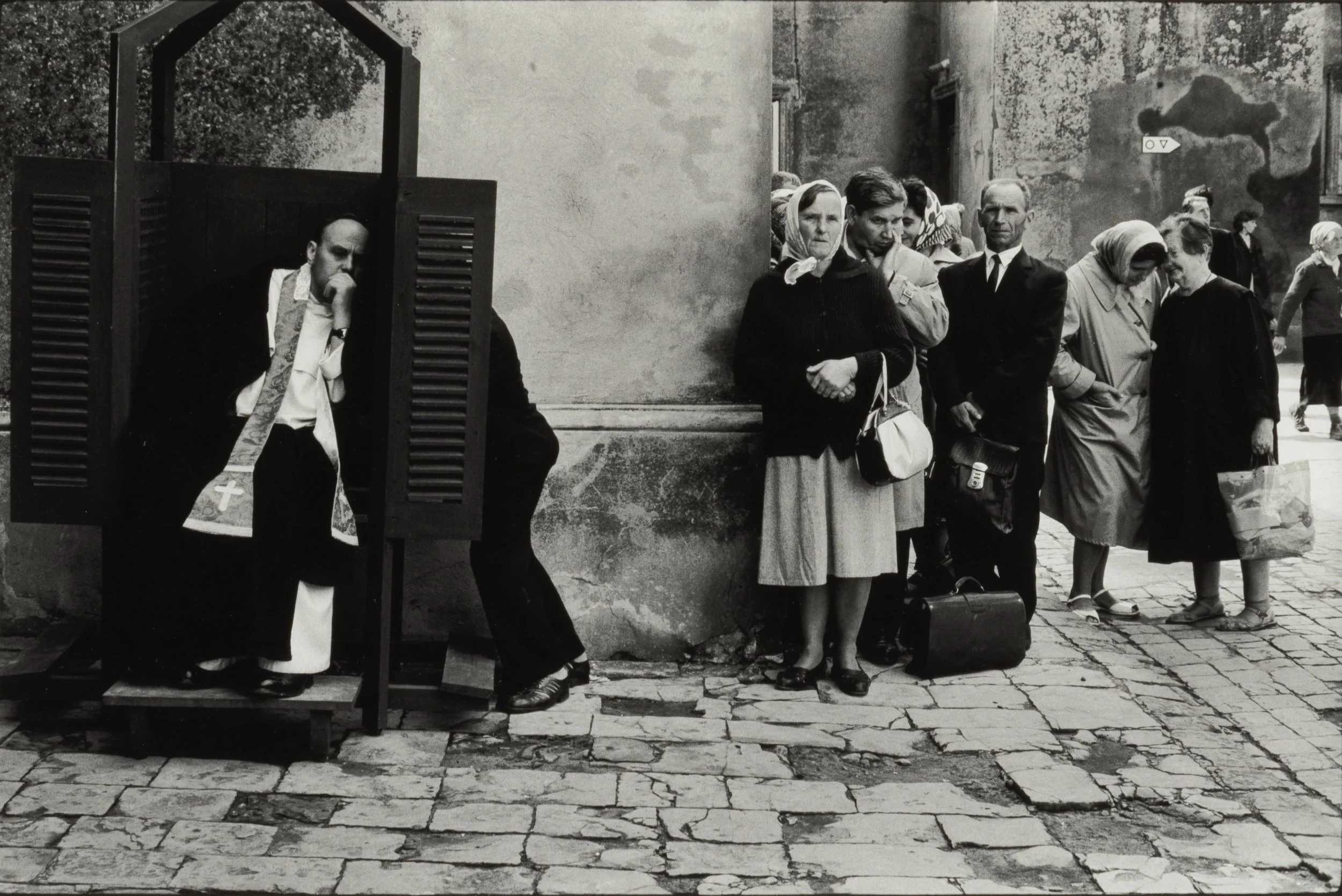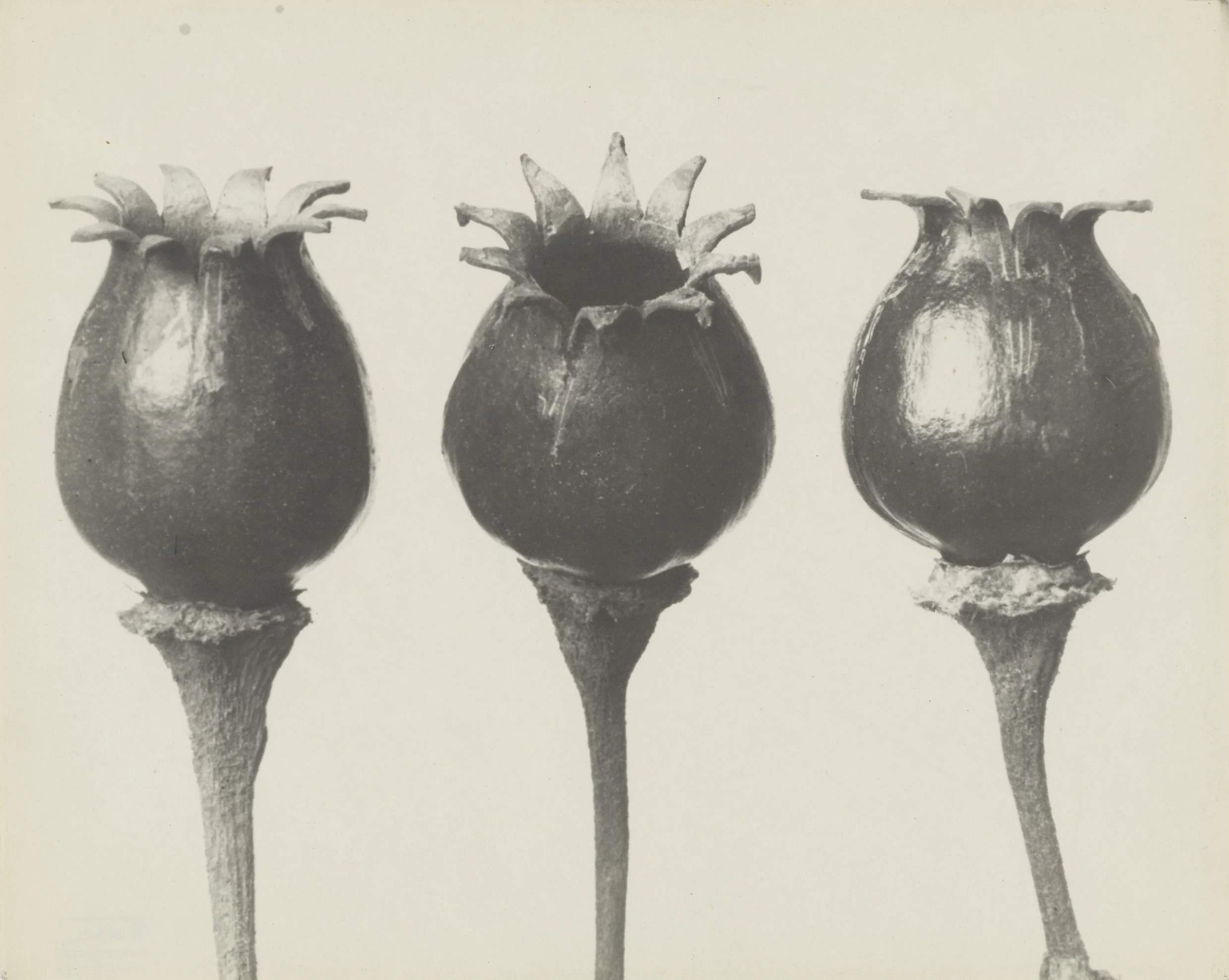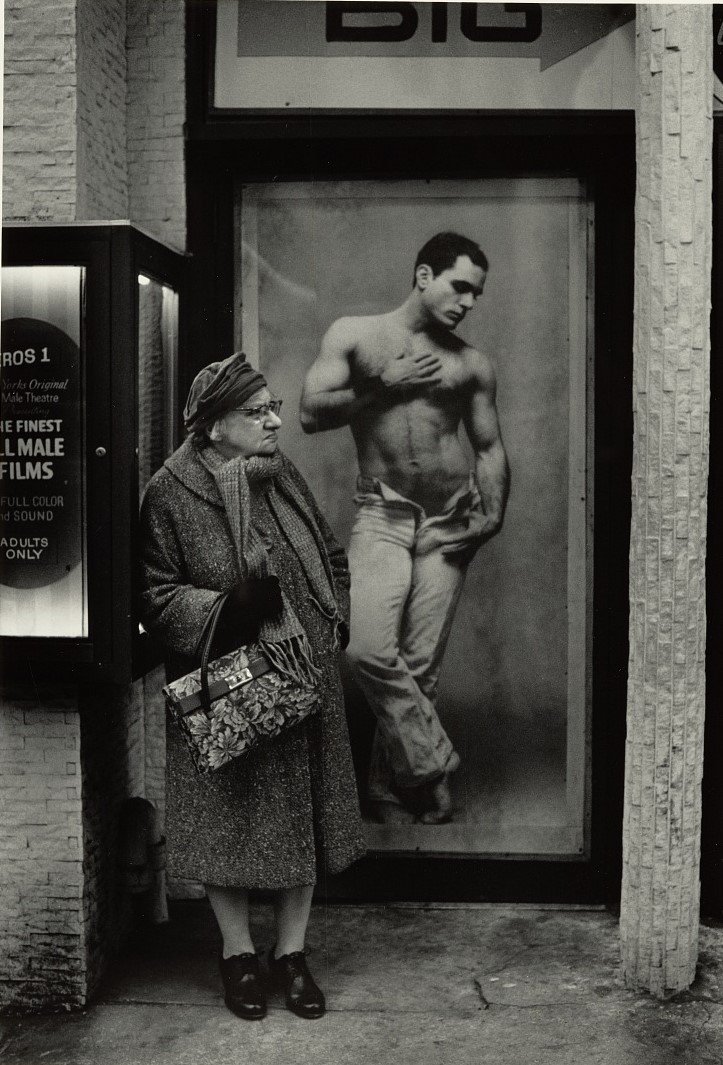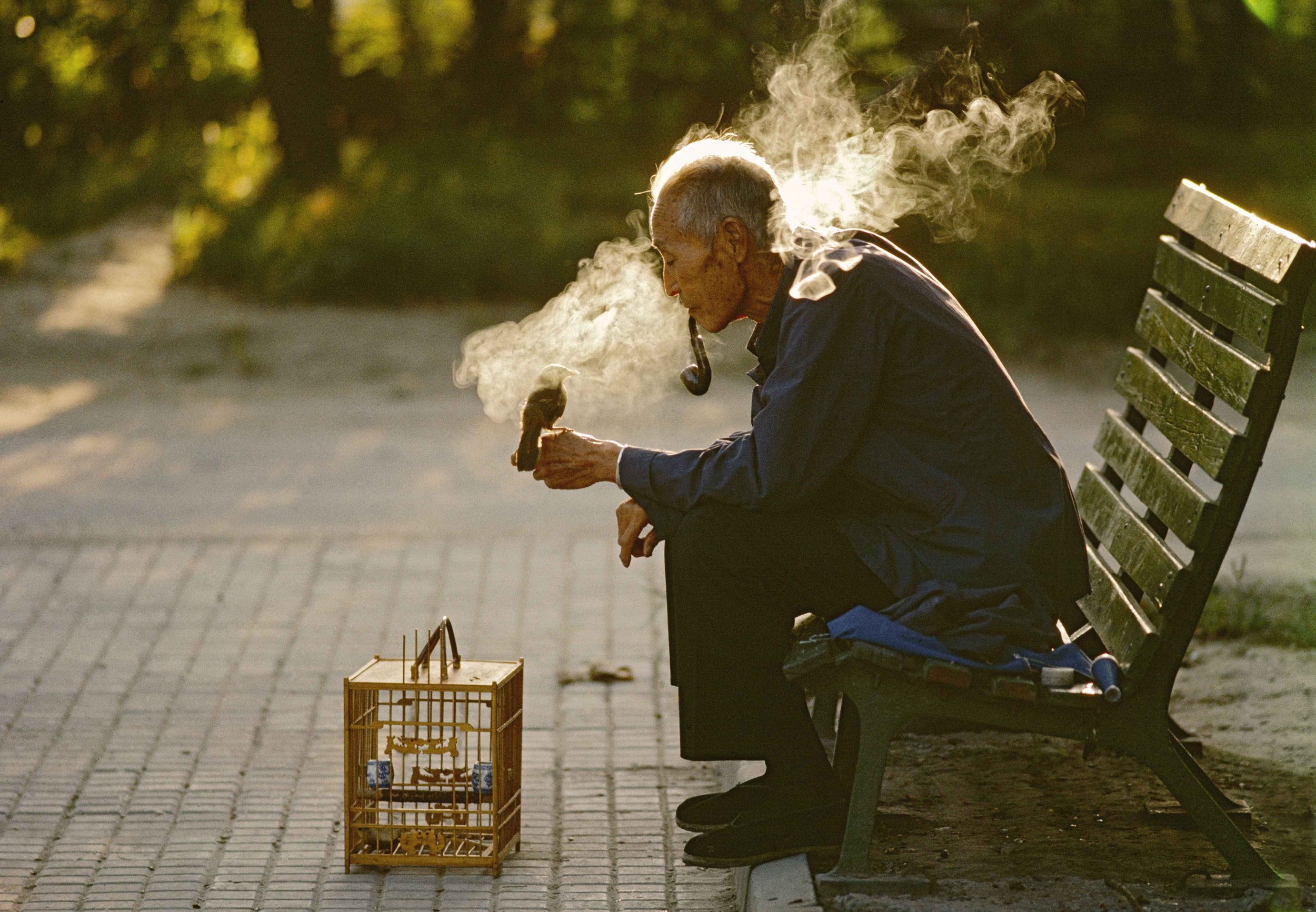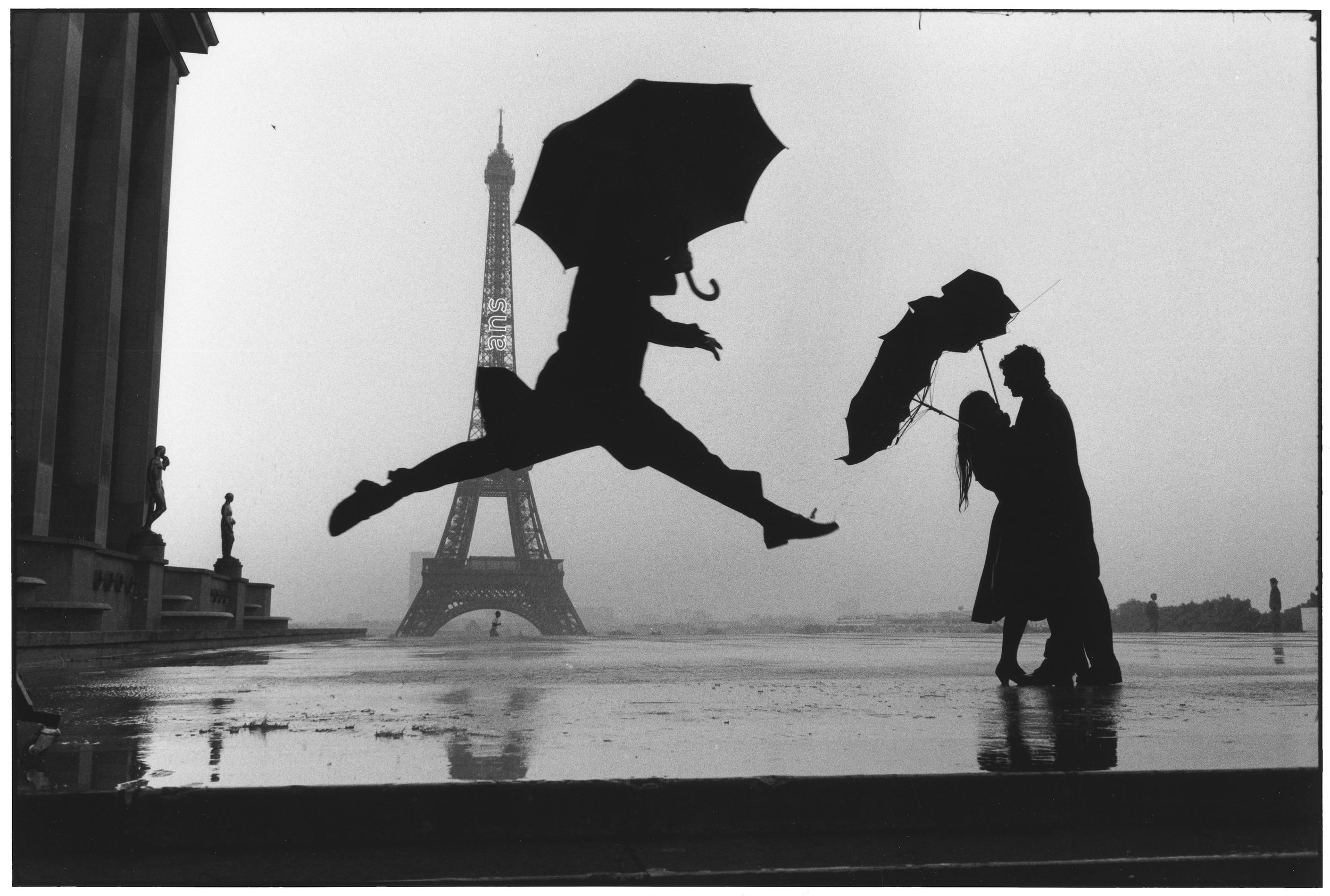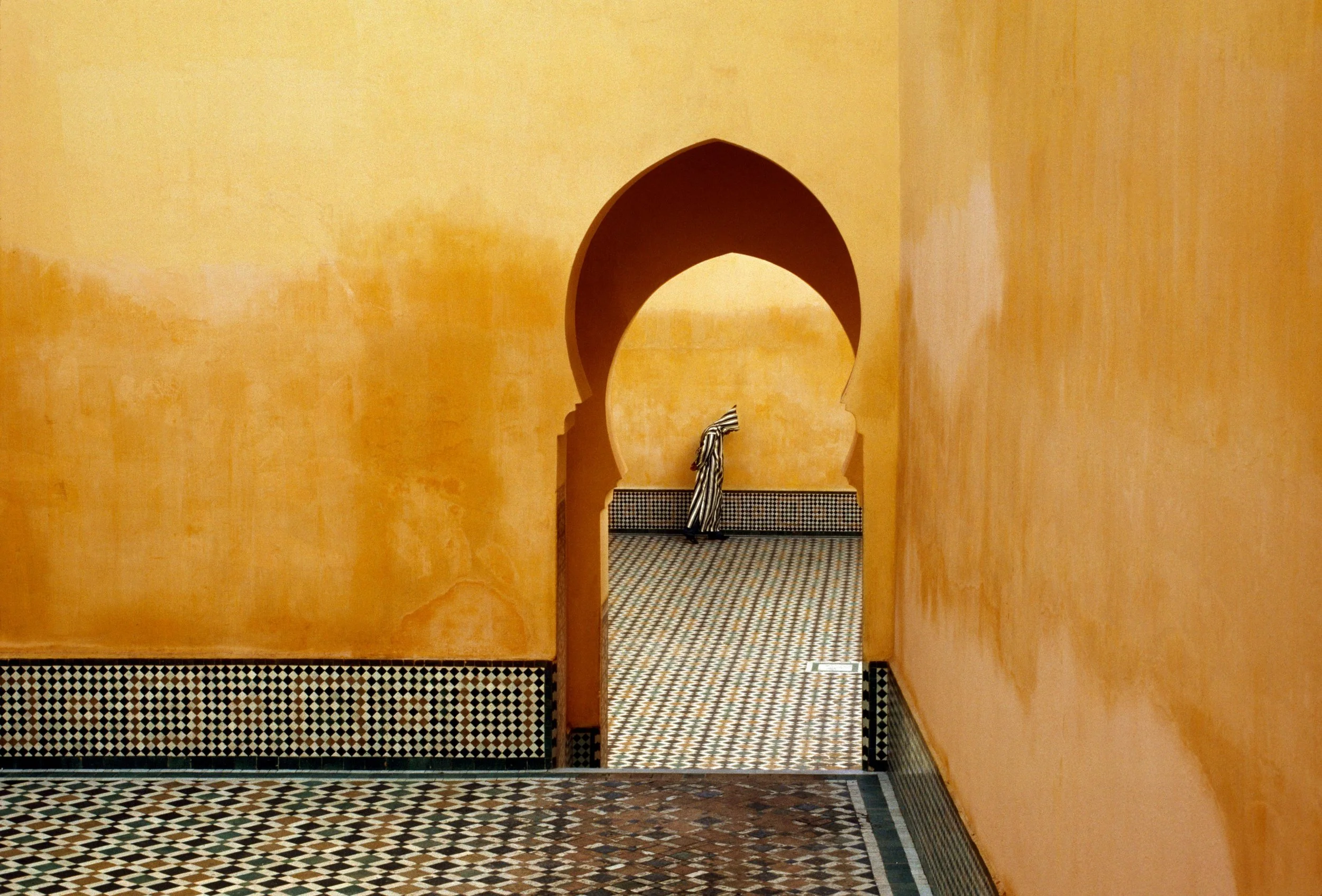
Die Tugend der Reduktion | Fotografie-Forum der StädteRegion Aachen | Monschau
Fotografie-Forum der StädteRegion Aachen | Monschau
29. Juni - 21. September 2025
Die Tugend der Reduktion
Mit Werken von: Bruno Barbey, Jonas Bendiksen, Norbert Bunge, René Burri, Robert Capa, Cristina de Middel, Pietro Donzelli, Jochen Ehmke, Stuart Franklin, Burt Glinn, Philippe Halsman, Max Jacoby, Jürgen Klauke, Barbara Klemm, Herbert List, Algirdas Milleris, László Moholy-Nagy, Martin Munkácsi, Paolo Pellegrin, Albert Renger-Patzsch, Max Scheler, Friedrich Seidenstücker, Anton Stankowski, Dennis Stock, Antanas Sutkus, Hugo Thomassen, Wolfgang Weber, Paul Wolff
Bruno Barbey, Meknes, Moulay Ismail Mausoleum, Marokko, 1985 © Bruno Barbey / Magnum Photos
Mit "Die Tugend der Reduktion" präsentiert das Fotografie-Forum in Monschau eine Ausstellung, die das Wesentliche in der Fotokunst ins Zentrum rückt: Die Schönheit klarer Kompositionen, die ästhetische Kraft der Vereinfachung und die Poesie zeitloser Bildgestaltung. Rund 170 Werke von 25 Positionen laden dazu ein, die Reduktion als künstlerische Strategie quer durch die Genres – von Landschaft über Porträt bis zum Stillleben – neu zu entdecken. Die Schau lenkt den Blick auf Werke, die sich einer eindeutigen Verortung in Zeit und Raum entziehen, und lädt zur Schulung eines "anderen Sehens" ein.
Im weiten Spektrum der ausgestellten Fotografien begegnet man der Reduktion als formgebendem Prinzip: Friedrich Seidenstückers poetisch-strenge Bildarrangements aus den 1930er-Jahren stehen neben Paolo Pellegrins reduzierten Kompositionen des Vulkans Fagradalsfjall, in denen ein minimales Spektrum aus Schwarz- und Rottönen dominiert. Die legendäre Fotografie „Matterhorn, Schweiz“ von Barbara Klemm kondensiert Landschaft in ein ikonisches Zusammenspiel von Licht und Linie und evoziert einen fast sakralen Blick auf die Natur.
Auch in der Porträt- und Stilllebenfotografie wird Reduktion zur künstlerischen Haltung. Herbert List bringt mit präziser Lichtführung und surrealer Klarheit die Dinge auf den Punkt, Hugo Thomassen entzieht im Spiel mit Licht und Schatten jede Ablenkung, und Anton Stankowski führt im Fotogramm "Erbsenschote" die ästhetische Wirkung der Form vor Augen. Porträts erscheinen als Silhouetten auf neutralen Hintergründen, Hände, Gesten, Gesichtszüge werden zu elementaren Zeichen menschlicher Präsenz.
Die Ausstellung regt an, das Verhältnis von Sujet und Gestaltung neu zu befragen und im scheinbar Einfachen die Komplexität des Bildes zu entdecken. Begleitend vertiefen Workshops und Führungen die Thematik: Teilnehmende lernen, warum gerade die bewusste Reduktion die Bildsprache der Fotografie so besonders macht – und wie im Mut zum Wesentlichen das Zeitlose sichtbar wird.
Herbert List, Wasserspiegelung, Lago Maggiore 1949 © Herbert List Estate
Avec « La vertu de la réduction », le Fotografie-Forum de Monschau présente une exposition qui met l’essentiel au cœur de l’art photographique : la beauté des compositions épurées, la force esthétique de la simplification et la poésie d’une conception intemporelle de l’image. Environ 170 œuvres, issues de 25 approches artistiques différentes, invitent à redécouvrir la réduction comme stratégie créatrice à travers tous les genres – du paysage au portrait en passant par la nature morte. L’exposition attire l’attention sur des œuvres qui se dérobent à toute localisation précise dans le temps et l’espace et incite à exercer « un autre regard ».
Dans le vaste éventail des photographies exposées, la réduction se révèle comme un principe formel omniprésent : les agencements d’images à la fois poétiques et rigoureux de Friedrich Seidenstücker des années 1930 côtoient les compositions épurées du Volcan Fagradalsfjall de Paolo Pellegrin, où domine une palette minimale de noirs et de rouges. L’iconique photographie « Cervin, Suisse » de Barbara Klemm condense le paysage à un jeu emblématique de lumière et de lignes, évoquant une vision presque sacrée de la nature.
Dans la photographie de portrait et de nature morte également, la réduction apparaît comme une attitude artistique. Herbert List saisit l’essence des choses grâce à une lumière précise et une clarté surréaliste, Hugo Thomassen élimine toute distraction par un jeu maîtrisé d’ombre et de lumière, et Anton Stankowski présente, avec son photogramme « Cosse de pois », la puissance esthétique de la forme. Les portraits émergent tels des silhouettes sur de fonds neutres, tandis que mains, gestes ou traits du visage deviennent des signes élémentaires de la présence humaine.
L’exposition invite à repenser le rapport entre sujet et composition et à découvrir la complexité de l’image dans ce qui semble simple. Ateliers et visites guidées approfondissent le propos : les participants apprennent pourquoi la réduction consciente confère une spécificité unique à la photographie – et comment le courage de l’essentiel rend visible la dimension intemporelle.
René Burri, Mexico, Mexico City, 1976, San Cristobal. Stable horse pool and house (1966-69) planned by Luis Barragan and Andres Casillas © René Burri / Magnum Photos
Con “La virtù della riduzione”, il Fotografie-Forum di Monschau presenta una mostra che mette al centro dell’arte fotografica l’essenziale: la bellezza delle composizioni chiare, la forza estetica della semplificazione e la poesia di un’immagine senza tempo. Circa 170 opere, rappresentative di 25 visioni artistiche, invitano il pubblico a scoprire la riduzione come strategia creativa trasversale ai generi – dal paesaggio al ritratto fino alla natura morta. L’esposizione indirizza lo sguardo su opere che sfuggono a una precisa collocazione temporale e spaziale, invitando a esercitare “un altro modo di vedere”.
Nell’ampio spettro delle fotografie esposte, la riduzione si manifesta come principio formale: i poetici e rigorosi arrangiamenti degli anni ’30 di Friedrich Seidenstücker si affiancano alle composizioni del vulcano Fagradalsfjall di Paolo Pellegrin, dominate da una gamma ridotta di neri e rossi. L’iconica fotografia “Matterhorn, Svizzera” di Barbara Klemm condensa il paesaggio in un gioco di luce e linea emblematico, evocando uno sguardo quasi sacro sulla natura.
Anche nella fotografia di ritratto e di natura morta, la riduzione diventa un atteggiamento artistico: Herbert List coglie l’essenza delle cose con una conduzione della luce precisa e una chiarezza surreale, Hugo Thomassen elimina ogni distrazione con giochi di luci e ombre, mentre Anton Stankowski mostra, nel fotogramma “Baccello di pisello”, la forza estetica della forma. I ritratti appaiono come silhouette su sfondi neutri, mani, gesti, tratti del volto si trasformano in segni elementari della presenza umana.
La mostra sollecita a riconsiderare il rapporto fra soggetto e composizione, e a scoprire nella semplicità apparente la complessità dell’immagine. Workshop e visite guidate approfondiscono la tematica: i partecipanti apprendono perché proprio la riduzione consapevole renda il linguaggio fotografico così speciale – e come, nel coraggio dell’essenziale, diventi visibile il senza tempo.
With "The Virtue of Reduction", the Fotografie-Forum in Monschau presents an exhibition that places the essential at the heart of photographic art: the beauty of clear compositions, the aesthetic power of simplification, and the poetry of timeless image-making. Some 170 works by 25 artists invite visitors to rediscover reduction as an artistic strategy across various genres – from landscapes and portraits to still life. The exhibition focuses the gaze on works that resist clear localisation in time and space, inviting the cultivation of "an alternative way of seeing".
Within the broad spectrum of photographs on display, reduction emerges as a formative principle: Friedrich Seidenstücker’s poetically rigorous arrangements from the 1930s are juxtaposed with Paolo Pellegrin’s pared-down compositions of the Fagradalsfjall volcano, where a minimal palette of black and red dominates. Barbara Klemm’s legendary photograph "Matterhorn, Switzerland" condenses landscape into an iconic interplay of light and line, evoking an almost sacred view of nature.
In portrait and still life photography too, reduction becomes an artistic stance. Herbert List distils objects to their essence through precise lighting and surreal clarity; Hugo Thomassen, playing with light and shadow, eliminates all distractions; and Anton Stankowski, in his photogram "Pea Pod", demonstrates the aesthetic effect of form itself. Portraits appear as silhouettes against neutral backgrounds, while hands, gestures, and facial features become elemental signs of human presence.
The exhibition encourages visitors to question anew the relationship between subject and composition, and to discover the image’s complexity within apparent simplicity. Supplementary workshops and guided tours delve deeper into the theme: participants learn why it is precisely conscious reduction that makes the pictorial language of photography so unique – and how, with the courage to focus on the essentials, the timeless reveals itself.









